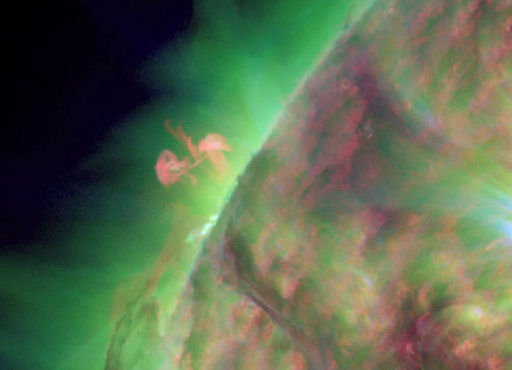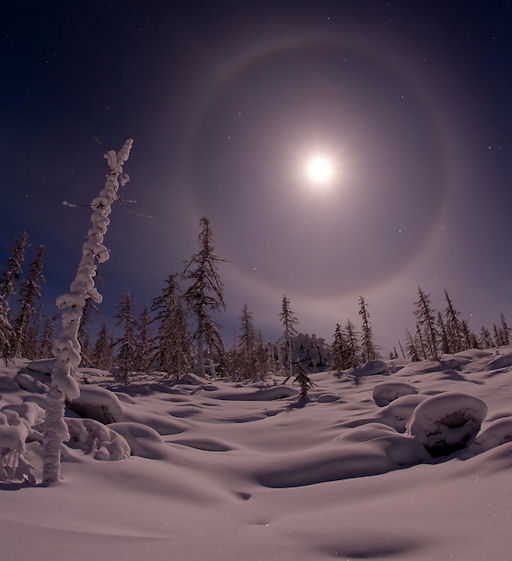Metallic photos of the sun by renowned photographer Greg Piepol bring together the best of art and science. Buy one or a whole set. They make a stellar gift. | | |
KEPLER DISCOVERS A MINIATURE SOLAR SYSTEM: NASA's Kepler spacecraft has discovered the tiniest solar system so far. It is a red dwarf star closely circled by three rocky planets smaller than Earth. Because red dwarfs are so abundant, this could be the most common type of planetary system in the Milky Way. Get the full story from Science@NASA.
FARSIDE ERUPTION: Today, Jan. 12th, between 10:00 and 1300 UT, NASA's STEREO-Behind spacecraft observed a significant eruption on the farside of the sun. Although the blast was eclipsed by the edge of the solar disk, it nevertheless produced a long-duration X-ray flare (C3-class) detectable from Earth. A movie from NASA's Solar Dynamics Observatory shows some of the debris flying over the NE limb:

The blast site is not far behind the eastern limb, and it is only ~two days away from rotating onto the Earthside of the sun. By this weekend, we'll get a direct look at the active region. Perhaps it will break the recent string of mostly quiet days and low solar activity. Solar flare alerts: text, voice.
January 2012 Aurora Gallery
[previous Januaries: 2010, 2009, 2008, 2007, 2005, 2004]
BE ALERT FOR MOON HALOES: With the Moon nearly full, this week is a good time to see a Moon halo. Ruslan Ahmetsafin photographed this speciman over Aykhal, Russia, on Jan 8th:

"The taiga was awash in moonlight, while the full Moon itself was surrounded by a bright ring," says Ahmetsafin. "The air temperature was 37 degrees below zero--very cold!--but it was worth it to see such a beautiful scene."
Moon haloes are caused by ice crystals in cirrus clouds 5 to 10 km above the ground. Crystals catch the light of the Moon and bend its rays into a luminous ring. Because the air is always freezing 10 km above the ground, these haloes may appear at any time of year, over any part of Earth. Nevertheless, they tend to favor northern winter. So look up from the snow (if you have any) to see what the ice might be doing in the air overhead.
more haloes: from Ken Scott of Suttons Bay, MI; from Dr Salvador Aguirre of Hermosillo, Sonora, Mexico; from Tanner Schaaf of Hutchinson, Minnesota; from Riccardo Rossi of Cognento (MO) - Italy; from Colin Chatfield of Saskatoon, Saskatchewan, Canada; from Paul Beebe of Upsala, Ontario, Canada;
New: Comet Lovejoy Gallery
[previous comets: McNaught, Holmes, Lulin, Tuttle, Ikeya-Zhang]

